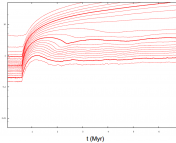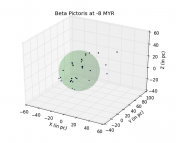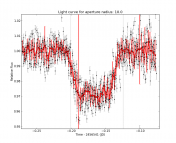In July we put out a call for descriptions of research being done by undergraduates, and we got a great response! If you missed out on previous posts in this series, you can check them out here:
UR#1: Gamma-Ray Bursts and Protostars
UR#2: Near-Earth Objects and Hot Stars
Today we’re publishing the third installment.
You can share what you’re doing too by clicking on the “Your Research” tab above (or clicking here) and using the form provided to submit a brief (fewer than 200 words) write-up of your work. The target audience is one familiar with astrophysics but not necessarily your specific subfield, so write clearly and try to avoid jargon. Feel free to also include either a visual regarding your research or else a photo of yourself!
We look forward to hearing from you!
************
Marcel Haas
Utrecht University, Netherlands
Marcel is now a postdoc at the Space Telescope Science Institute in Baltimore, but he completed this work as an undergrad at Utrecht University.

We observe the spiral galaxy M51 nearly face-on, which makes star cluster identification a lot easier. Every single bright dot that you can identify is not a star, but a full-blown star cluster with masses in excess of thousands of solar masses.
Star clusters in their host galaxy
In my undergraduate research we investigated several aspects of the star clusters in the Whirlpool Galaxy (M51). Broadband imaging observations on a small wavelength range (we use HST/ACS, B, V and I imaging) are not sufficient to derive ages, masses, extinctions and metallicity for all clusters separately. Therefore, we only investigated the radii and luminosities. As the sample of star clusters is huge (several thousand), we can divide the star clusters according to their distance to galaxy center and whether they are in a spiral arm or not. We modeled the evolution of the luminosity function of a star cluster population, with their birth rate, destruction rate and mass distribution as free parameters. Based on comparison between the modeled and observed luminosity function, we conclude that in the center of the galaxy the upper mass limit for star clusters is higher, the disruption rate faster, or both. We found almost no correlation between radius and luminosity, suggesting that shortly after the formation of the clusters, the cluster radii are changed in a non-uniform way. The median radius is 2.1 pc and we find tentative evidence that star clusters in the spiral arms are more compact than in the inter-arm regions.
Adam Greenberg
Columbia University
Adam has been doing research this summer with Frits Paerels.
Many gas clouds surrounding galaxy groups and clusters are heated intermittently by shocks. These shocks may bring the gas out of ionization equilibrium, and it takes time for that equilibrium to be re-established. If the gas is out of ionization equilibrium, it should be measurable via X-ray spectography. We analyze data taken on NGC5044, on gasses at outskirts of the galaxy group. Radial ranges were considered such that the gas density was relatively low, and collisional ionization processes dominate. We show that the emission spectrum of the gas, obtained with CCD imaging spectroscopy, indicates that the gas may be only marginally in equilibrium. Furthermore, we show that with CCD resolution in low surface brightness data, it may be impossible to determine metal abundances unambiguously, and that the abundance measurement is strongly dependent on the degree of equilibration. We briefly explore the impact of high spectral resolution imaging spectroscopy on this problem, such as will be available soon with the microcalorimeters on Astro-H.
************
Many thanks to Marcel and Adam for their contributions!





Trackbacks/Pingbacks